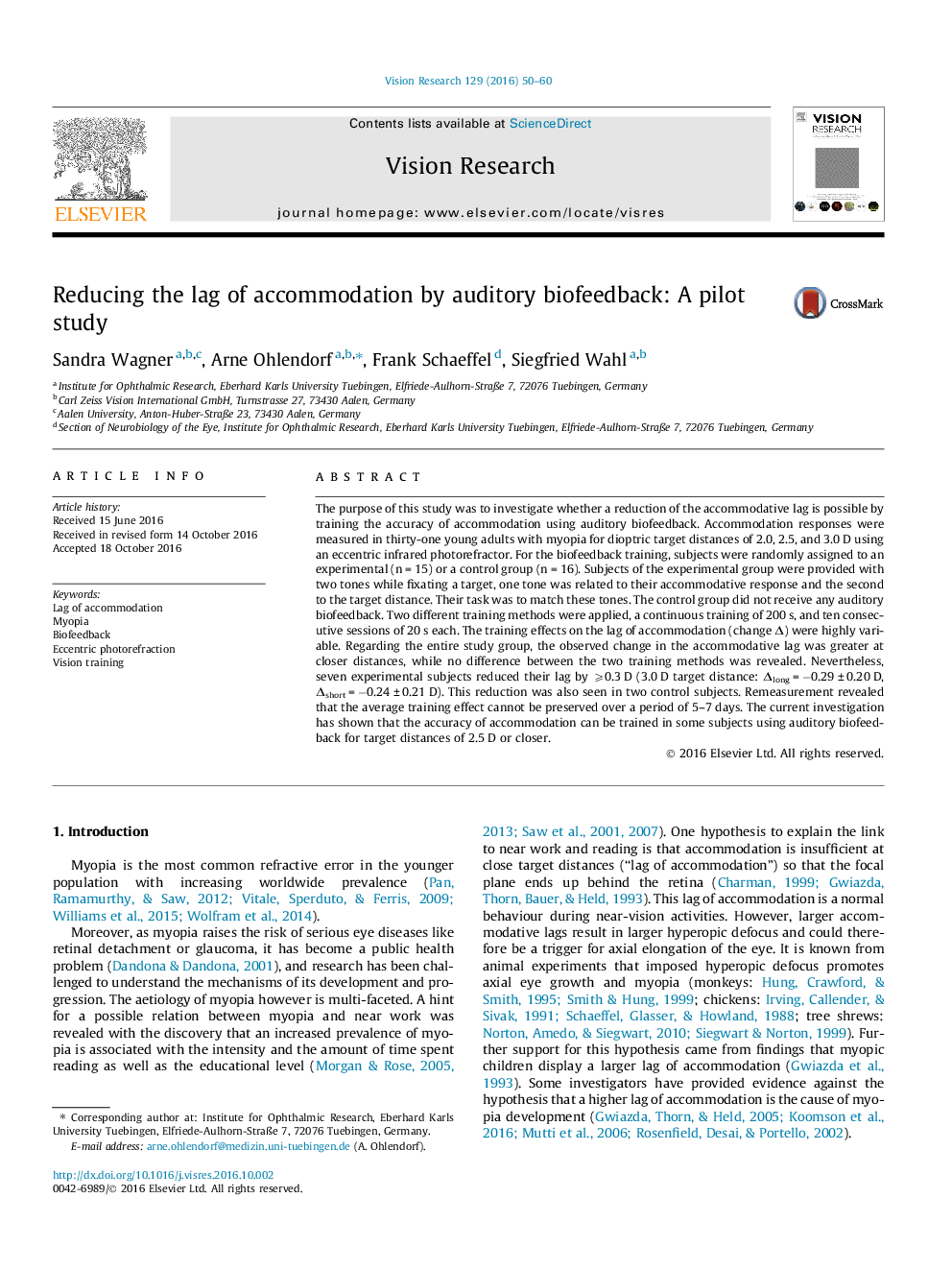| Article ID | Journal | Published Year | Pages | File Type |
|---|---|---|---|---|
| 5705957 | Vision Research | 2016 | 11 Pages |
Abstract
The purpose of this study was to investigate whether a reduction of the accommodative lag is possible by training the accuracy of accommodation using auditory biofeedback. Accommodation responses were measured in thirty-one young adults with myopia for dioptric target distances of 2.0, 2.5, and 3.0 D using an eccentric infrared photorefractor. For the biofeedback training, subjects were randomly assigned to an experimental (n = 15) or a control group (n = 16). Subjects of the experimental group were provided with two tones while fixating a target, one tone was related to their accommodative response and the second to the target distance. Their task was to match these tones. The control group did not receive any auditory biofeedback. Two different training methods were applied, a continuous training of 200 s, and ten consecutive sessions of 20 s each. The training effects on the lag of accommodation (change Î) were highly variable. Regarding the entire study group, the observed change in the accommodative lag was greater at closer distances, while no difference between the two training methods was revealed. Nevertheless, seven experimental subjects reduced their lag by ⩾0.3 D (3.0 D target distance: Îlong = â0.29 ± 0.20 D, Îshort = â0.24 ± 0.21 D). This reduction was also seen in two control subjects. Remeasurement revealed that the average training effect cannot be preserved over a period of 5-7 days. The current investigation has shown that the accuracy of accommodation can be trained in some subjects using auditory biofeedback for target distances of 2.5 D or closer.
Keywords
Related Topics
Life Sciences
Neuroscience
Sensory Systems
Authors
Sandra Wagner, Arne Ohlendorf, Frank Schaeffel, Siegfried Wahl,
